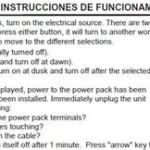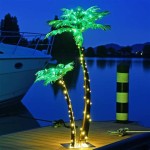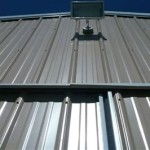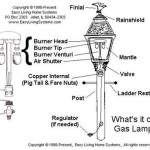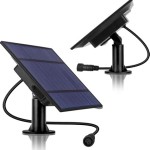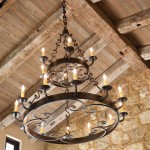Outdoor Motion Sensor Light Switches: A Comprehensive Guide
Outdoor motion sensor light switches offer a practical and energy-efficient solution for illuminating exterior spaces. These devices automatically activate lights when movement is detected within a specified range, providing enhanced security, convenience, and cost savings. Understanding the various types, features, installation procedures, and best practices associated with outdoor motion sensor light switches is crucial for making informed decisions and maximizing their benefits.
Types of Outdoor Motion Sensor Light Switches
Outdoor motion sensor light switches are categorized based on their technology, design, and functionality. The primary differentiating factors include the type of sensor used (Passive Infrared or Microwave/Ultrasonic), the mounting style (wall-mounted or integrated), and the adjustability of various settings. Choosing the appropriate type depends on the specific application, environmental conditions, and desired level of customization.
Passive Infrared (PIR) Sensors: PIR sensors detect changes in infrared radiation emitted by warm objects, such as humans, animals, and vehicles. These sensors are widely used due to their relatively low cost and ease of installation. However, their performance can be affected by factors such as ambient temperature, humidity, and obstructions in the line of sight. PIR sensors are generally more effective in detecting movement across their field of view rather than directly towards them.
Microwave/Ultrasonic Sensors: Microwave and ultrasonic sensors emit high-frequency radio waves or sound waves, respectively, and detect changes in the reflected signals caused by moving objects. These sensors are less susceptible to temperature variations and can penetrate non-metallic materials, allowing them to detect motion through walls or fences. However, they may be more prone to false triggers caused by environmental factors such as wind and rain. Microwave sensors are also known to sometimes interfere with other electronic devices.
Wall-Mounted Motion Sensor Switches: These switches are designed to be mounted directly onto an exterior wall, typically replacing an existing standard light switch. They often feature adjustable sensitivity and timer settings, allowing users to customize the detection range and the duration for which the lights remain on after motion is detected. Wall-mounted switches are a convenient option for retrofitting existing lighting fixtures.
Integrated Motion Sensor Lights: These units combine a motion sensor with a complete lighting fixture, such as a floodlight or a pathway light. They offer a streamlined and aesthetically pleasing solution for new installations. Integrated units often provide a wider range of features, including adjustable light levels and customizable detection zones.
Key Features and Considerations
When selecting an outdoor motion sensor light switch, several key features and considerations should be taken into account to ensure optimal performance and suitability for the intended application. These factors include the sensor range, sensitivity, duration, and override options, as well as the switch's compatibility with different types of lighting fixtures and its environmental rating.
Sensor Range: The sensor range specifies the maximum distance at which the motion sensor can detect movement. This range typically varies from 15 to 70 feet, depending on the model and the sensor technology used. It is important to choose a sensor range that is appropriate for the size of the area being monitored. A larger range may be necessary for open spaces, while a smaller range may be sufficient for confined areas.
Sensitivity Adjustment: Sensitivity adjustment allows users to fine-tune the sensor's responsiveness to movement. Lower sensitivity settings reduce the likelihood of false triggers caused by small animals or environmental factors, while higher sensitivity settings increase the sensor's ability to detect subtle movements. The ideal sensitivity setting will depend on the specific environment and the desired level of security.
Duration Adjustment: Duration adjustment determines the length of time that the lights remain on after motion is detected. This setting typically ranges from a few seconds to several minutes. A shorter duration setting conserves energy, while a longer duration setting provides extended illumination for tasks such as unlocking a door or navigating a pathway. The optimal duration setting will depend on the intended use of the lighting.
Override Option: An override option allows users to manually turn the lights on and off, bypassing the motion sensor. This feature is useful when continuous illumination is required, such as for outdoor gatherings or when performing tasks that require constant light. Override options typically involve a simple switch or button that allows users to toggle between automatic and manual operation.
Lighting Compatibility: It is essential to ensure that the motion sensor light switch is compatible with the type of lighting fixture being used. Some switches are designed specifically for incandescent bulbs, while others are compatible with LED, fluorescent, or halogen bulbs. Using an incompatible switch can damage the switch or the lighting fixture, or it may result in poor performance. Furthermore, ensure the wattage of the bulbs being used does not exceed the maximum wattage rating of the switch to prevent overloading and potential fire hazards.
Environmental Rating: Outdoor motion sensor light switches should have an appropriate environmental rating to withstand the elements. Look for switches with a waterproof or weatherproof rating, such as IP65 or higher. This rating indicates that the switch is protected against dust, rain, and other environmental hazards. Using a switch with an inadequate environmental rating can lead to premature failure and potential safety hazards.
Installation and Best Practices
Proper installation is critical to ensure the reliable and effective operation of an outdoor motion sensor light switch. Following the manufacturer's instructions and adhering to best practices will help maximize the switch's performance and lifespan. Consult with a qualified electrician if you are not comfortable performing electrical work. Always turn off the power at the breaker box before commencing any electrical installation.
Planning and Preparation: Before starting the installation, carefully review the manufacturer's instructions and gather all necessary tools and materials. These may include a screwdriver, wire strippers, wire connectors, electrical tape, and a voltage tester. Identify the appropriate mounting location for the switch, ensuring that it is within range of the desired area and that it is not obstructed by trees, bushes, or other objects. Ensure compliance with all local building codes and regulations.
Wiring Connections: Disconnect the power to the existing light fixture at the breaker box. Carefully remove the existing light switch and identify the wires connected to it. Typically, there will be a hot wire (usually black), a neutral wire (usually white), and a ground wire (usually green or bare copper). Connect the wires from the motion sensor light switch to the corresponding wires in the electrical box, using wire connectors to ensure secure and insulated connections. Follow the wiring diagram provided by the manufacturer. Ensure the ground wire is properly connected to the grounding screw in the electrical box. Securely tuck the wires back into the electrical box and attach the motion sensor light switch to the box using screws.
Testing and Adjustments: After installing the motion sensor light switch, turn the power back on at the breaker box. Test the switch to ensure that it is functioning correctly. Adjust the sensitivity, duration, and other settings to achieve the desired performance. Walk within the sensor range to verify that the lights turn on automatically. Adjust the sensor head to direct the detection field to the desired area. Fine-tune the settings until the switch operates reliably and avoids false triggers.
Optimizing Performance: To optimize the performance of an outdoor motion sensor light switch, consider the following tips: Keep the sensor lens clean and free of debris. Avoid placing the sensor in direct sunlight or near heat sources, which can cause false triggers. Periodically inspect the wiring connections to ensure that they are secure and free of corrosion. Replace the batteries in battery-operated switches as needed. Consider using shielded or twisted-pair wiring to minimize interference from other electrical devices. Consult the manufacturer's instructions for specific recommendations and troubleshooting tips.
Safety Precautions: When working with electrical wiring, always take appropriate safety precautions. Wear insulated gloves and eye protection. Use a voltage tester to verify that the power is off before touching any wires. Never work on electrical wiring in wet conditions. If you are unsure about any aspect of the installation process, consult with a qualified electrician. Improper installation can result in electrical shock, fire, or damage to the switch or lighting fixture.
By carefully considering the various types, features, installation procedures, and best practices associated with outdoor motion sensor light switches, individuals can effectively enhance the security, convenience, and energy efficiency of their outdoor spaces. Regular maintenance and adherence to safety guidelines will ensure the long-term reliable performance of these valuable devices.

Energy Saving Pir Outdoor Motion Sensor Switch Ip65 180 Degree

China S 5m 8m Sensor Distance Motion Light Switch Made In Com

Outdoor 180 Degree Security Pir Motion Movement Sensor Detector

Ed Outdoor 110 220v Infrared Pir Motion Sensor Detector Wall Light Switch 140

Sansi 30 Watt 4000 Lumens 180 Degree White Motion Sensor Outdoor Integrated Led 5000k Waterproof Dusk To Dawn Flood Light 01 04 001 013001 The Home Depot

Pir Motion Sensor Human Detector Adjustable Auto On Off Switch 220v

Zenith Motion Sensor Wiring Diagram Outside Lights To Handyman Wire Home Electrical

Motion Sensor Switch Ac 110v 240v Outdoor Adjustable Infrared Pir Detector Light Com

Outdoor Motion Sensor Timer Switch Buy Light With Warehouse Lighting Com

Motion Sensor Outdoor Replacement Wall Light Switch For Loads
Related Posts
